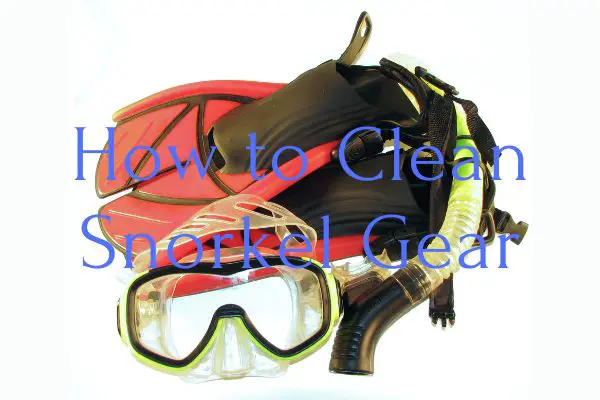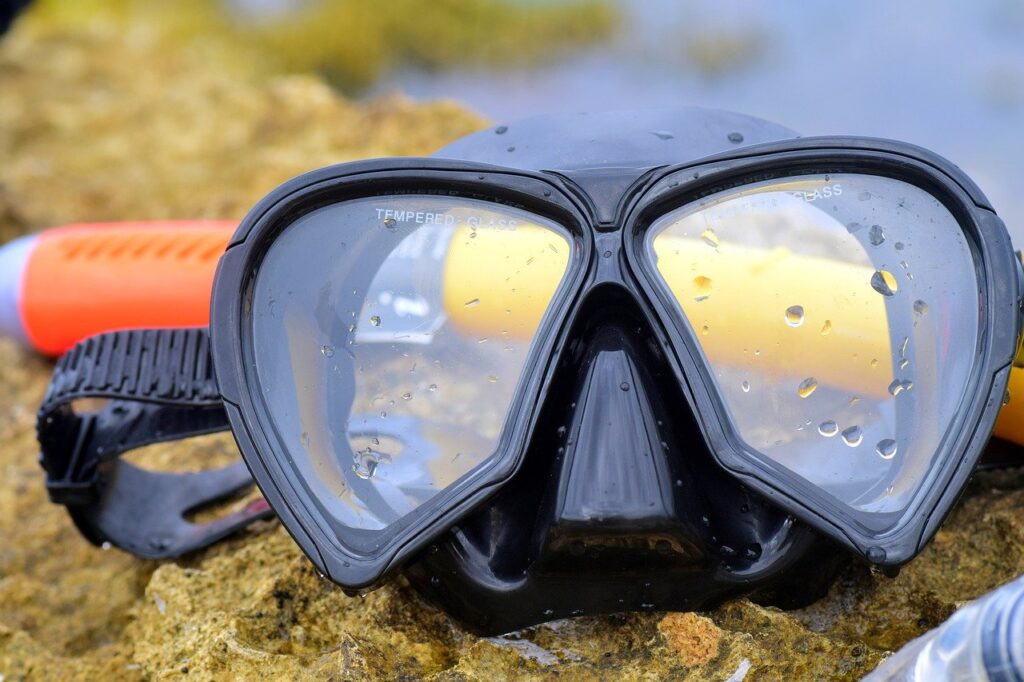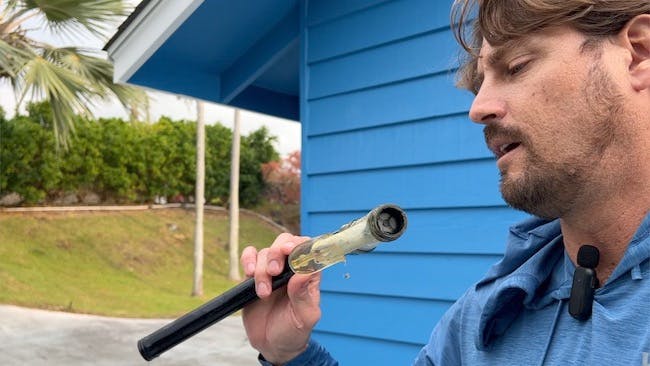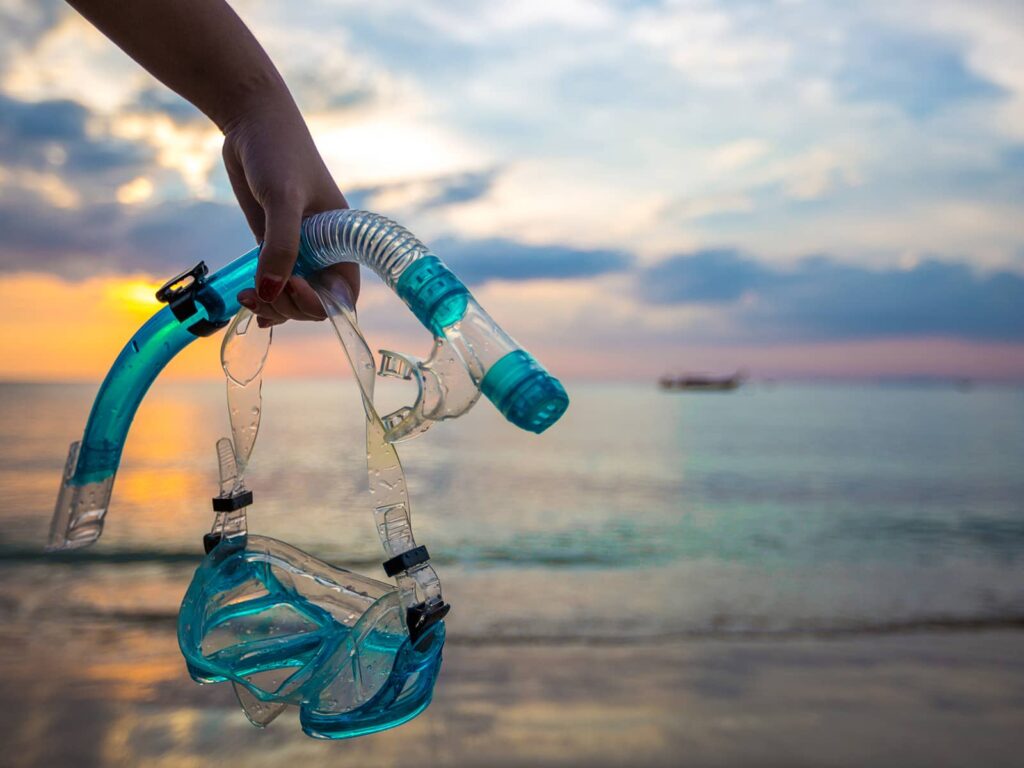
Are you a snorkeling enthusiast looking for tips on how to keep your snorkel tube in top condition? Look no further! In this comprehensive guide, you will discover the ultimate methods for cleaning and maintaining your snorkel tube. From removing saltwater residue to preventing mold and mildew, we’ve got all the expert tips and tricks you need to prolong the life of your favorite snorkeling accessory. Prepare to dive into a world of sparkling clean and well-maintained sniffing, as we reveal the secrets to keeping your snorkel tube in pristine condition.
Section 1: Cleaning Tools and Supplies
Choosing the right cleaning tools
When it comes to cleaning your snorkel tube, it’s essential to choose the right tools to ensure a thorough and effective clean. Some must-have tools include a soft-bristle brush, a small pipe cleaner or flexible brush for hard-to-reach areas, and a toothbrush for scrubbing the mouthpiece. Additionally, having a bucket or sink for soaking and rinsing, as well as a towel or cloth, will make the cleaning process much easier.
Essential supplies for cleaning
In addition to the right cleaning tools, there are a few essential cleaning supplies you should have on hand. Mild soap or dish detergent is perfect for cleaning the inside of the snorkel tube, as it is gentle yet effective. Freshwater is crucial for rinsing, so make sure you have access to a clean water source. Lastly, it’s a good idea to have vinegar and baking soda on hand for removing saltwater deposits, which we’ll discuss in more detail later.
Additional materials for specialized cleaning
If you’re looking to do a deep clean or disinfect your snorkel tube, there are additional materials you may need. Hydrogen peroxide and bleach solutions can be used for disinfection, but be sure to handle them with caution and follow proper safety guidelines. Natural disinfectants such as tea tree oil or lemon juice can also be used if you prefer a more eco-friendly approach. Lastly, if you’re dealing with specific issues like mold or mildew, a mold and mildew remover may be necessary.
Section 2: Pre-cleaning Preparation
Inspecting the snorkel tube
Before diving into the cleaning process, it’s important to inspect your snorkel tube for any visible damage or wear. Check for cracks, tears, or any signs of deterioration that might affect its performance. It’s crucial to address any issues before proceeding with cleaning to prevent further damage or potential accidents while snorkeling.
Removing any detachable parts
Many snorkel tubes have detachable parts such as valves, mouthpieces, or purge valves. Before cleaning the tube itself, it’s recommended to remove these parts for a more thorough clean. This will allow you to access all the nooks and crannies, ensuring that every part of your snorkel tube is sparkling clean.
Rinsing with fresh water
Once you’ve inspected the snorkel tube and removed any detachable parts, the next step is to give it a good rinse with fresh water. This will help remove any loose debris or saltwater residue before proceeding with the cleaning process. Run the water through the tube, ensuring that both the inside and outside are thoroughly rinsed.

This image is property of www.seaparadise.com.
Section 3: Cleaning the Snorkel Tube
Using mild soap and water
After the pre-cleaning preparation, it’s time to clean the snorkel tube itself. Start by filling a bucket or sink with warm water and adding a few drops of mild soap or dish detergent. Submerge the snorkel tube in the soapy water and let it soak for a few minutes. The mild soap will help break down any dirt or residue, making it easier to clean.
Brushing the inside of the tube
Using a soft-bristle brush or a small pipe cleaner, gently scrub the inside of the snorkel tube. Pay close attention to the areas where debris or saltwater deposits may be trapped, such as the bends and curves of the tube. By scrubbing the inside, you’ll ensure that any build-up or contaminants are thoroughly removed.
Scrubbing the mouthpiece
The mouthpiece of your snorkel tube is one of the most important parts to keep clean, as it comes into direct contact with your mouth. Take a toothbrush and apply some mild soap or dish detergent to it. Gently scrub the mouthpiece, paying attention to all the crevices and edges. Rinse it thoroughly to ensure all soap residue is removed.
Cleaning the purge valve
If your snorkel tube has a purge valve, it’s essential to clean it properly. Use a small pipe cleaner or flexible brush to remove any debris or build-up from the valve. If necessary, you can also soak the valve in the soapy water or use a cotton swab to clean hard-to-reach areas. Once cleaned, rinse it thoroughly to ensure proper functioning.
Section 4: Removing Saltwater Deposits
Understanding the impact of saltwater deposits
Saltwater deposits can accumulate inside your snorkel tube over time and can cause not only an unpleasant taste but also affect the tube’s performance. These deposits can be stubborn to remove, but with the right cleaning techniques, you can effectively get rid of them.
Soaking in vinegar solution
One effective method of removing saltwater deposits is soaking the snorkel tube in a vinegar solution. Create a mixture of equal parts vinegar and water in a container that is large enough to submerge the tube completely. Let the tube soak for several hours or overnight. The vinegar will help dissolve the salt deposits, making them easier to remove during the cleaning process.
Using baking soda paste
Another natural cleaning solution for saltwater deposits is baking soda paste. Mix baking soda with a small amount of water to create a thick paste. Apply the paste to the inside of the snorkel tube, focusing on areas with heavy salt buildup. Let it sit for a few minutes, then use a soft-bristle brush or pipe cleaner to scrub away the deposits. Rinse thoroughly with freshwater afterward.
Employing commercial cleaning products
If vinegar or baking soda paste doesn’t fully remove the saltwater deposits, there are commercial cleaning products available specifically designed for snorkel tube cleaning. These products are often formulated to break down salt deposits and sanitize the tube effectively. Follow the instructions on the product label for best results.

This image is property of i.ytimg.com.
Section 5: Drying and Storing the Snorkel Tube
Shaking out excess water
After cleaning your snorkel tube, it’s important to remove excess water before allowing it to dry. Shake the tube vigorously to remove any water droplets inside. This will speed up the drying process and prevent any residual moisture from sitting inside the tube.
Allowing sufficient drying time
Proper drying is crucial to prevent the growth of mold or mildew inside your snorkel tube. To ensure sufficient drying time, place the tube in a well-ventilated area or use a towel or cloth to air dry it. It’s recommended to leave it in an upright position to allow any remaining moisture to evaporate fully.
Avoiding direct sunlight
While it may be tempting to speed up the drying process by placing the snorkel tube under direct sunlight, this can actually be detrimental. Sunlight can cause the tube’s material to deteriorate and fade over time. It’s best to choose a shaded area for drying to protect the integrity of your snorkel tube.
Proper storage techniques
Once your snorkel tube is thoroughly dry, it’s time to store it properly. Find a clean and dry place to store the tube, away from direct sunlight or extreme temperatures. Avoid storing it in a tightly coiled position, as this can cause kinks or permanent damage to the tube. Instead, consider hanging it or placing it in a storage container designed to keep it in its original shape.
Section 6: Maintaining and Extending Lifespan
Regular inspections and maintenance
To ensure your snorkel tube stays in top condition, it’s important to regularly inspect it for any signs of wear or damage. Check for cracks, tears, or any loose parts that may need repair or replacement. By catching these issues early on, you can prevent further damage and extend the lifespan of your snorkel tube.
Avoiding harsh chemicals
When cleaning your snorkel tube, it’s important to avoid using harsh chemicals that can damage the material or degrade its performance. Stick to mild soap or detergent and natural cleaning solutions whenever possible. Harsh chemicals such as bleach or abrasive cleaners can cause discoloration, warping, or deterioration of the tube.
Replacing worn-out parts
Over time, certain parts of your snorkel tube, such as the mouthpiece or valves, may wear out and need replacement. Regularly check the condition of these parts and replace them as needed to ensure optimal performance and comfort during your snorkeling adventures.
Proper usage and care tips
Using your snorkel tube correctly and taking proper care of it can help extend its lifespan. Avoid biting down excessively on the mouthpiece or forcefully pulling the tube. Rinse it with fresh water after each use to remove any saltwater or debris. Store it properly and avoid placing heavy objects on top of it. Following these tips will help keep your snorkel tube in excellent condition for years to come.

This image is property of fh-sites.imgix.net.
Section 7: Deep Cleaning and Disinfecting
Understanding the need for deep cleaning
While regular cleaning is essential, there are times when a deeper clean is necessary. Deep cleaning helps remove stubborn stains, odor-causing bacteria, or accumulated grime that regular cleaning may not fully eliminate. It’s especially important if you’ve been using your snorkel tube in saltwater or in areas with high bacterial content.
Using hydrogen peroxide solution
Hydrogen peroxide is an effective disinfectant that can be used for deep cleaning your snorkel tube. Create a solution by mixing equal parts hydrogen peroxide and water. Submerge the tube in the solution and let it soak for at least 30 minutes. Rinse thoroughly with freshwater afterward to remove any residue.
Disinfecting with bleach solution
If you prefer using bleach for disinfection, dilute the bleach with water in a ratio of one part bleach to ten parts water. Submerge the snorkel tube in the solution and let it soak for 10-15 minutes. Rinse thoroughly afterward to ensure all traces of bleach are removed.
Alternative natural disinfectants
If you prefer more natural alternatives, you can use tea tree oil or lemon juice as disinfectants. Mix a few drops of tea tree oil or lemon juice with water and soak the snorkel tube in the solution for at least 30 minutes. Rinse thoroughly afterward to remove any residue. These natural disinfectants are effective in killing bacteria and leaving your snorkel tube fresh and clean.
Section 8: Storage and Travel Tips
Choosing appropriate storage containers
When it comes to storing your snorkel tube, it’s important to choose the right container. Look for containers specifically designed for snorkel tubes to ensure a proper fit and protection against dust, moisture, and physical damage. If you don’t have a specialized container, make sure to store the tube in a dry and clean environment, away from any potential hazards.
Protective measures during travel
If you’re planning to bring your snorkel tube with you while traveling, it’s important to take some protective measures. Consider using a padded case or protective sleeve to prevent any damage during transportation. Make sure to pack the tube securely to avoid any shifting or crushing, and place it in a location in your luggage where it won’t be exposed to heavy objects.
Proper packing techniques
When packing your snorkel tube, it’s important to take care not to bend or crush it. Opt for a straight or slightly curved packing technique, ensuring that the tube remains in its natural shape. Additionally, avoid packing any sharp or heavy objects near the tube to prevent potential damage.

This image is property of saltwaterthings.com.
Section 9: Recommended Cleaning Frequencies
Determining cleaning intervals
The frequency at which you should clean your snorkel tube depends on several factors, including how often you use it and the conditions in which you use it. As a general rule, it’s recommended to clean your snorkel tube after every use, especially if you’ve been in saltwater or polluted areas. Regular cleaning will help prevent the buildup of debris and bacteria, ensuring a safe and enjoyable snorkeling experience.
Factors affecting cleaning frequency
Certain factors can influence how often you should clean your snorkel tube. If you’re using it in saltwater, the salt deposits can accumulate more quickly and require more frequent cleaning. Similarly, if you’ll be snorkeling in areas with high bacterial content, it’s important to clean your tube thoroughly after each use. Consider the water quality and any potential contaminants to determine the appropriate cleaning frequency.
General guidelines for regular cleaning
As a general guideline, it’s recommended to clean your snorkel tube thoroughly at least once a month, even if you haven’t been snorkeling. This will help remove any dust, mold, or mildew that may have accumulated during storage. By incorporating regular cleaning into your maintenance routine, you’ll ensure that your snorkel tube is always ready for your next adventure.
Section 10: Troubleshooting and Maintenance Tips
Identifying common issues
Even with proper cleaning and maintenance, issues may arise with your snorkel tube. Common problems include leaks, cracks, or mold and mildew growth. By knowing how to identify these issues, you can take immediate action and prevent further damage.
Solutions for leaks and cracks
If you notice leaks or cracks in your snorkel tube, it’s crucial to address them promptly. Small leaks can often be fixed using a waterproof adhesive or a sealant specifically designed for snorkel tube repairs. For larger cracks or significant damage, it may be necessary to replace the entire snorkel tube.
Dealing with mold or mildew
Mold or mildew can develop if your snorkel tube hasn’t been thoroughly dried before storage or if it’s been exposed to a damp environment. To combat mold or mildew growth, use a mold and mildew remover specifically formulated for the material of your snorkel tube. Apply the remover, let it sit for the recommended time, then thoroughly rinse the tube with freshwater.
Proactive maintenance practices
Prevention is key to maintaining a snorkel tube in excellent condition. Besides regular cleaning, there are a few proactive maintenance practices you can adopt. After each use, inspect the tube for any signs of damage or wear. Rinse it thoroughly with freshwater to remove any debris. Allow it to dry completely before storing it. By being proactive in your maintenance routine, you can catch potential issues early and ensure your snorkel tube lasts for many years of snorkeling enjoyment.
Cleaning and maintaining a snorkel tube not only prolongs its lifespan but also ensures a safe and enjoyable snorkeling experience. By following the comprehensive guide outlined in this article, you’ll have all the knowledge and tools necessary to keep your snorkel tube in top condition. Remember to choose the right cleaning tools and supplies, follow proper cleaning and drying techniques, and take preventative measures to address any issues that may arise. So dive in, explore the underwater world, and have peace of mind knowing that your snorkel tube is clean, well-maintained, and ready for your next snorkeling adventure!

This image is property of coralnomad.com.
